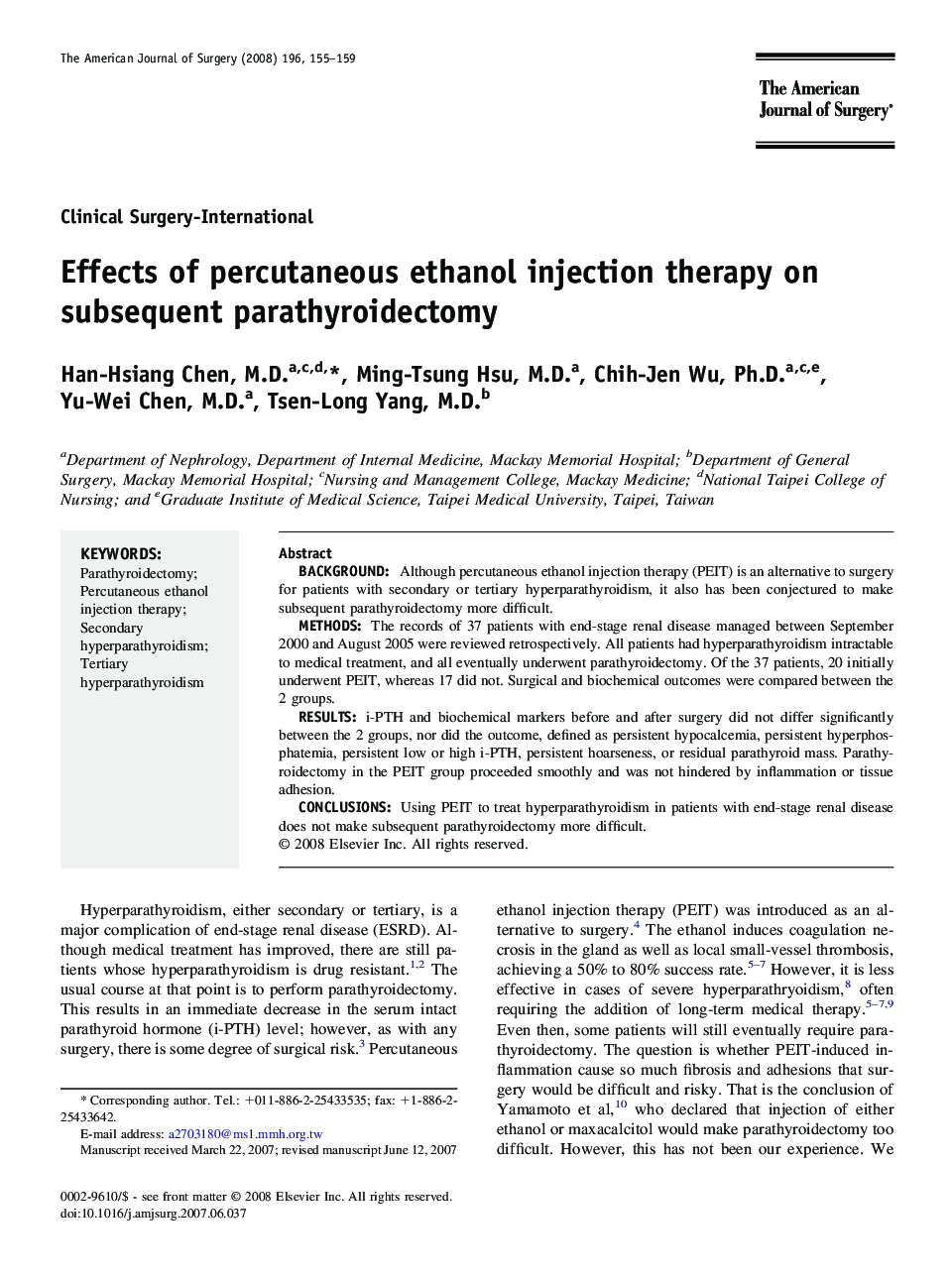| Article ID | Journal | Published Year | Pages | File Type |
|---|---|---|---|---|
| 4281586 | The American Journal of Surgery | 2008 | 5 Pages |
BackgroundAlthough percutaneous ethanol injection therapy (PEIT) is an alternative to surgery for patients with secondary or tertiary hyperparathyroidism, it also has been conjectured to make subsequent parathyroidectomy more difficult.MethodsThe records of 37 patients with end-stage renal disease managed between September 2000 and August 2005 were reviewed retrospectively. All patients had hyperparathyroidism intractable to medical treatment, and all eventually underwent parathyroidectomy. Of the 37 patients, 20 initially underwent PEIT, whereas 17 did not. Surgical and biochemical outcomes were compared between the 2 groups.Resultsi-PTH and biochemical markers before and after surgery did not differ significantly between the 2 groups, nor did the outcome, defined as persistent hypocalcemia, persistent hyperphosphatemia, persistent low or high i-PTH, persistent hoarseness, or residual parathyroid mass. Parathyroidectomy in the PEIT group proceeded smoothly and was not hindered by inflammation or tissue adhesion.ConclusionsUsing PEIT to treat hyperparathyroidism in patients with end-stage renal disease does not make subsequent parathyroidectomy more difficult.
